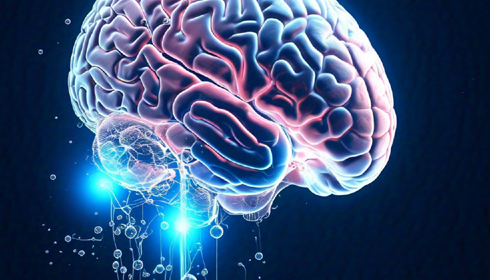
New Nano-Technology Could Revolutionize Brain Disease Treatment
In a remarkable achievement, researchers at the University of Pennsylvania developed lipid nanoparticles (LNPs) that can pass the blood-brain barrier (BBB) and precisely deliver therapies to brain cells. This development may lead to novel medicines for neurological illnesses such as Alzheimer's and Parkinson's, providing hope to millions of people worldwide.
The blood-brain barrier is a natural defence mechanism that protects the brain by keeping hazardous chemicals out. However, this protective barrier also prevents most drugs from working, making it difficult to treat brain illnesses. Traditional approaches, such as administering medication directly into the brain, are extremely invasive and hazardous. The new LNP technology alters the game by providing a non-invasive method for delivering medications directly to specific brain cells.
Lipid nanoparticles are small fat-based transporters. COVID-19 mRNA vaccines already employ them to transmit genetic instructions to cells. Researchers can now direct these LNPs to specific brain cells by attaching short sequences of amino acids known as peptides.
"Our first attempt was like sending a package across the country without knowing where it would end up," says Dr. Michael J. Mitchell, the study's senior author. "Now, with peptides, we can direct the package to the exact house with a red mailbox."
Because they are smaller, more stable, and easier to handle than antibodies, peptides play an important role in targeted delivery. Peptides also improve the stability of LNPs, lowering the danger of undesired immunological reactions.
The BBB is very selective, allowing only fat-soluble substances such as alcohol to pass through. LNPs can pass past the barrier because they include fatty components. Emily Han, the study's main researcher and first author, described the complexity of the process: "Injecting a medicine directly into the brain is an intrusive and hazardous procedure. Our method employs LNPs, which can naturally flow across the BBB without surgery."
Han became interested in peptides after contracting rabies. During her rabies vaccine study, she discovered that the rabies virus crosses the blood-brain barrier using a protein known as RVG29. This prompted her to employ RVG29 as a peptide to target brain cells.
The researchers first confirmed that the peptides were correctly linked to the LNPs. They next used animal models to examine if the peptide-functionalised LNPs (pLNPs) reached the correct brain cells. "It took over six months to develop a method for carefully dissecting brain tissue to confirm the results," Han told me.
The experiments revealed that the pLNPs successfully transported mRNA to targeted brain cells, a significant step towards developing viable treatments for brain illnesses.
This breakthrough technology has the potential to change the way we treat brain problems. Delivering mRNA directly to afflicted cells may allow for the healing of injured neurones or the slowing of disease development. Diseases like Alzheimer’s and Parkinson’s, which now have no treatment, could become treatable or even reversible with such tailored medications.
Dr. Mitchell states that the next challenge involves determining the number of neurones that require treatment to achieve therapeutic results. "Do we need to deliver mRNA to every neurone, or would treating just 10% be enough?" the researcher enquires. Answering this question will help to refine the technology and increase its efficiency.
Although this study is still in its early stages, it brings mRNA-based treatments for brain illnesses closer to reality. If successful, it could lead to safer, more effective medications that do not necessitate invasive procedures. The team is currently focussing on optimising the delivery procedure and determining how to make the medication available for clinical use.
To summarise, this novel strategy, which utilises lipid nanoparticles and peptides, represents a promising step forward in the fight against catastrophic brain illnesses. With further research, it may soon be possible to deliver life-saving therapies directly to the brain, thereby improving the lives of millions suffering from neurological illnesses.